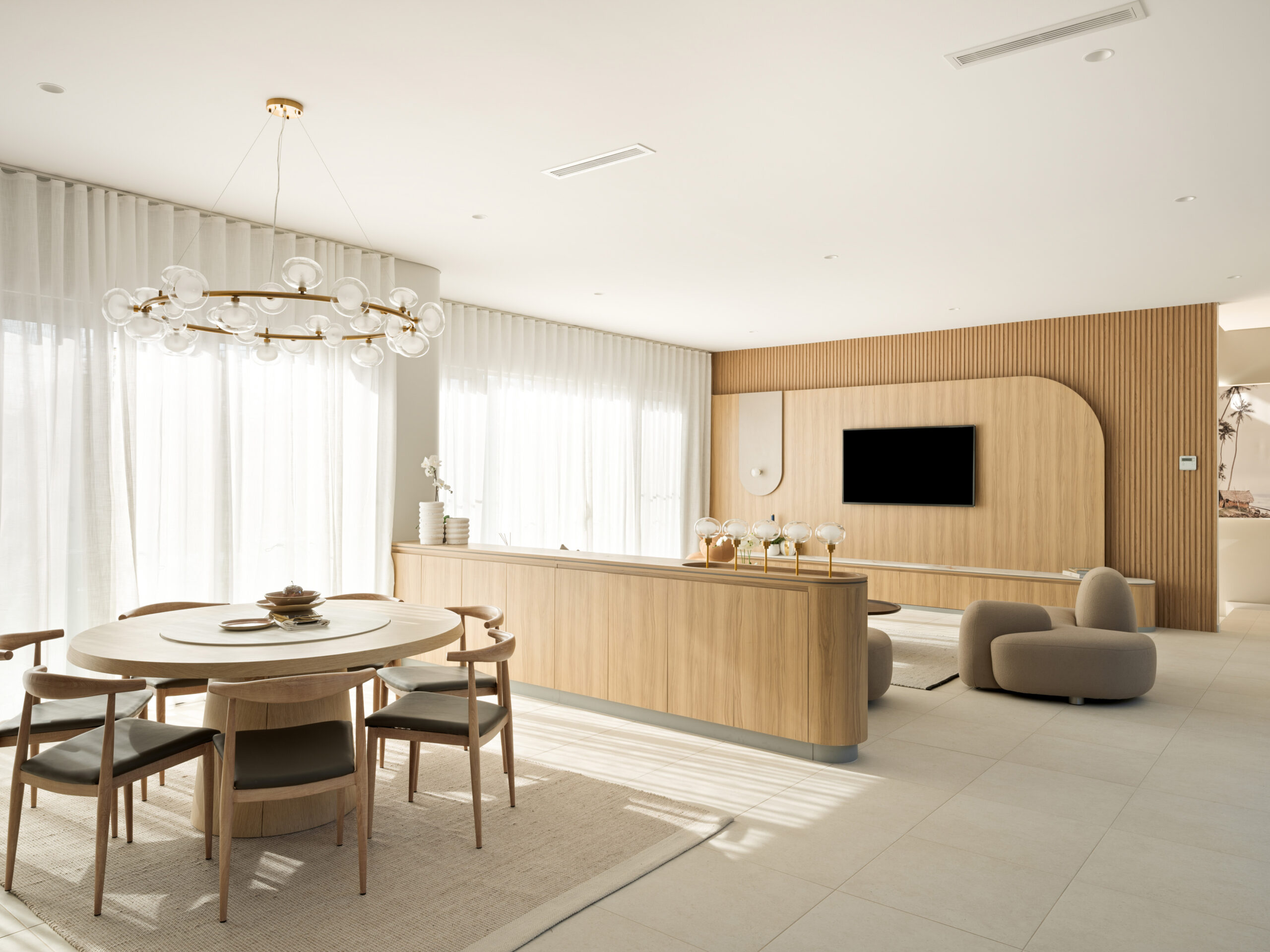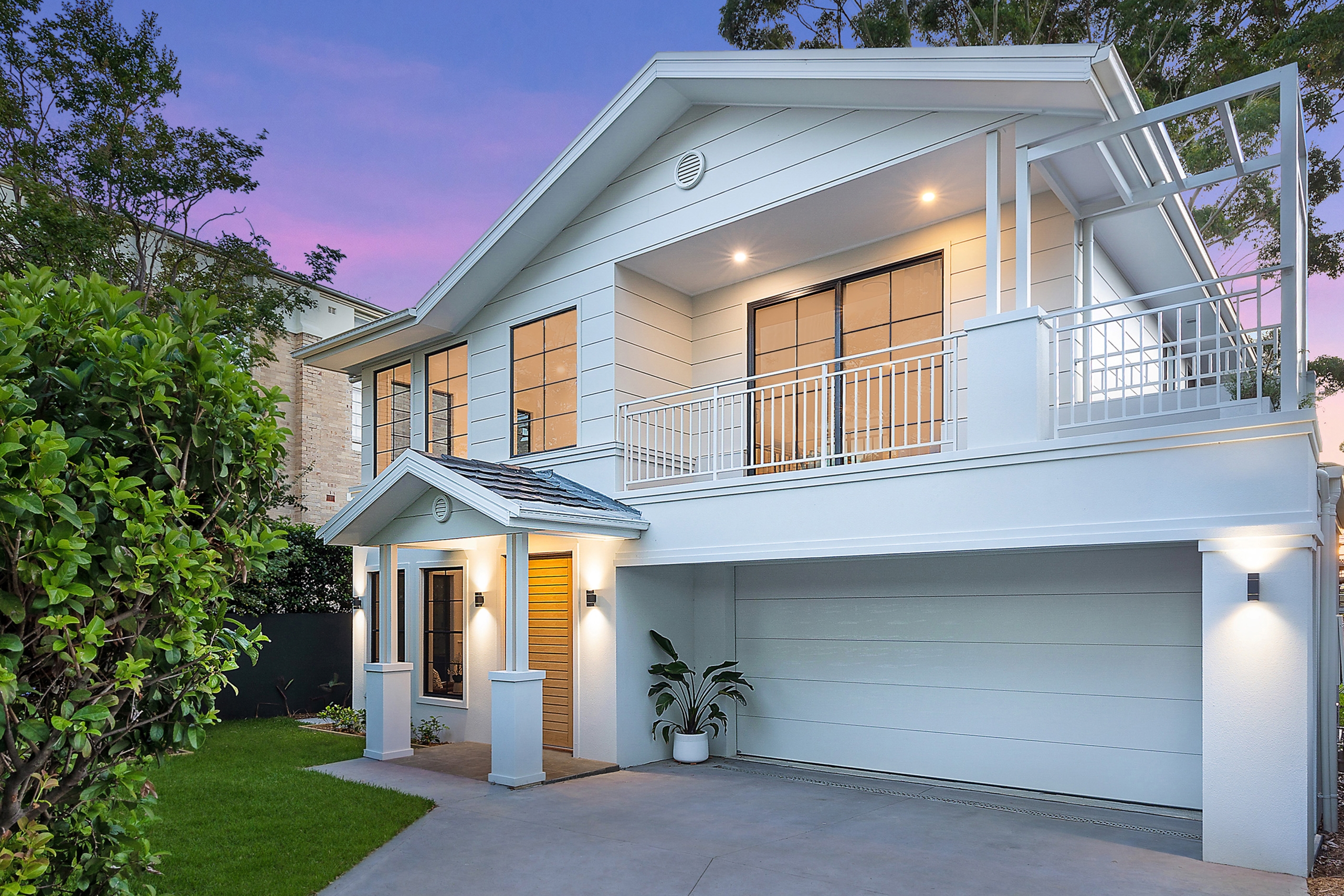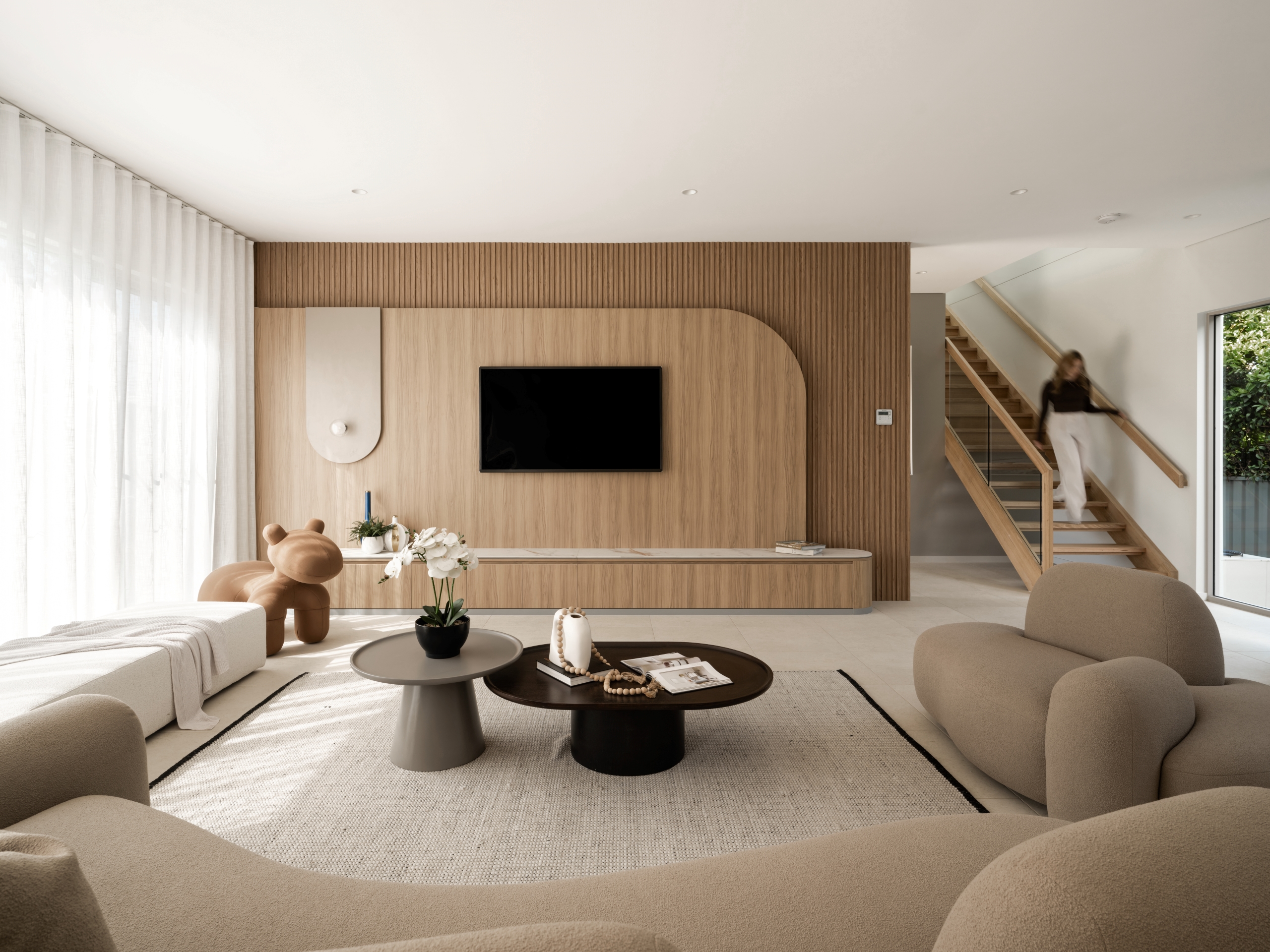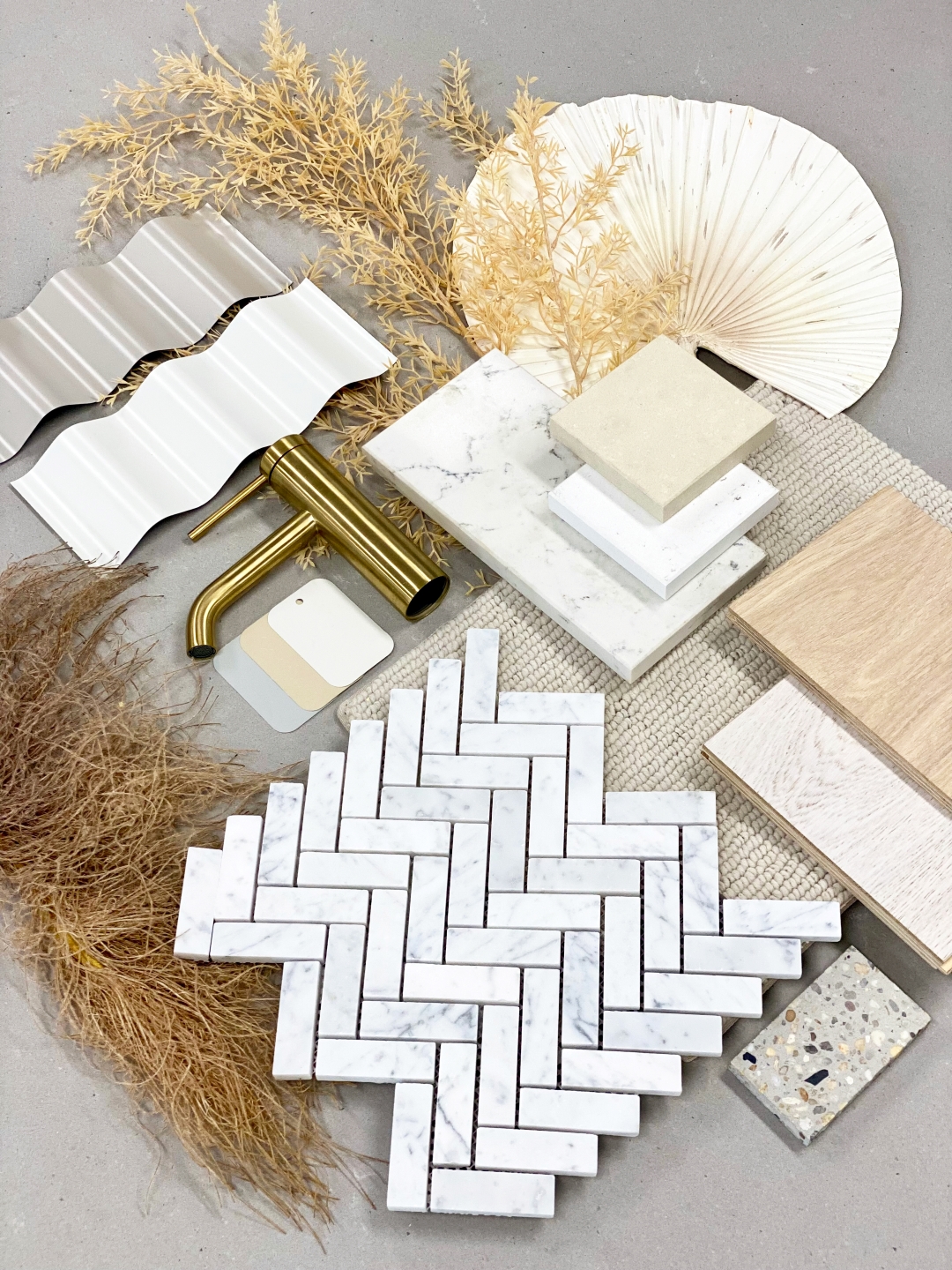
The Benefits and Design Tips for Open Plan Living
AdviceInspiration
18.09.24
If narrow corridors and small rooms are closing you, join the club. That’s why we’re smashing down walls to create open plan living. Think of it as giving your home fresh air; somewhere, family life flows as quickly as the conversation around a coffee table.
Open plan living designs have become increasingly popular, offering a fresh approach to home layouts that maximise space and light. Whether you’re living in a single, small one-story house or a large two-story house, open plan living can expand and open the space to something special.
At Worthington Homes, we’ve led this revolution in design by creating open plan spaces that turn houses into homes. Whether it’s how the outside looks or the interior layout, we have seen how open plan living can give new life to a more practical, trendy and modern property for Australian families.
Let’s explore the world of open plan living and why it might be the perfect fit for your dream home.
What is open plan living?
Open plan living is a design trend focused on using one’s space more openly. It refers to a design philosophy where two or more traditionally separate spaces are merged into one big room.
Typically, this means having an integrated kitchen plus dining room alongside a lounge in one ample space that can be used in many ways. These open plan living designs often incorporate hardwood floors throughout the space, creating a seamless flow between different functional areas.
No longer does a kitchen exist as an isolated workspace; now, it pulsates with life at the heart of the house, allowing conversations with the cook while preparing meals. This layout encourages interaction, nurtures togetherness and maximises every square metre of your home.
What are the benefits of open plan living?
While open plan living has become popular over the years, it’s not just a fad but a design that makes a lot of sense for today’s residents. From possible social interaction to exposure to natural light, here are the primary advantages underpinning open plan arrangements.
Flexibility
Whether hosting twelve people for dinner or looking for a quiet corner for weekend work, these designs offer flexibility and convenience. This flexibility also extends to furniture layout, allowing you to rearrange your living spaces to suit different occasions easily.
Social interaction
With open plan living, everybody tends to congregate around the kitchen when cooking. You can make preparations while talking with guests or even get something done while keeping an eye on children; all these instances help foster familiarity through shared daily rituals.
Open plan kitchens with island benches are particularly popular, as they create a natural gathering spot for family and friends.
Sense of space
The removal of partition walls and merging of rooms in open plan living make even smaller homes look grand. It’s not just about extra space either. It’s the feeling of freedom and lightness that accompanies a clutter-free space. The larger space created by open plan living designs can make even modest homes feel more expansive and luxurious.
This doesn’t only impact the interior but also impacts the outdoors like your BBQ area, garden, and shed – the easier and more open people can move from one to another, the more the more connected and harmonious a home feels.
Natural light
One of the major advantages of open plan living is its ability to maximise natural light. With fewer walls obstructing sunlight, it can penetrate deep into your home creating a bright, airy atmosphere.
Cost-effective
Open plan living can be cost-effective. By eliminating separate chambers, you may spend less on construction. Additionally, increased natural lighting and improved air circulation will reduce the use of artificial illumination and air conditioning, lowering utility bills.
However, it’s important to consider seasonal changes in Australia to ensure your house is energy efficient and stays cooler in summer and warmer in winter.
6 house design tips for open plan living
Implementing an effective and efficient open plan space demands careful consideration. That said, here are six key design ideas and decoration tips that can assist in opening the living space while promoting an organised and integrated home setup.
1. Defining spaces
Create “zones” without interrupting the flow. Subtly mark transitions between areas with furniture arrangement, rugs, or different flooring materials. A round dining table or sectional sofa can be a focal point, defining various areas while maintaining openness and defined zones.
Click To View & Download The Brochure
The above example is an open floor plan designed by Worthington Homes as called the Roland 17. This design shows how people can move freely from the kitchen and dining room without opening doors or moving to other rooms. You’ll also notice that having the kitchen dining right next to the kitchen makes it easier for people to put the food on the table and clean it up afterwards.
2. Kitchen integration
The kitchen often takes centre stage in open plan designs. Consider a kitchen island with bar seating to offer casual dining and provide a natural division between the cooking and living spaces.
At Worthington Homes, we help clients select appliances and design functional, attractive joinery that works harmoniously with open plan layouts. Consider how your kitchen designs integrate with the overall living and dining spaces to create a cohesive look.
3. Storage solutions
Given that everything is on display, intelligent storage is a necessity. Some recommended ways to avoid clutter include built-in cabinets, multi-functional pieces and smart storage alternatives.
We can design custom storage solutions, from concealed pantries to built-in media units, that preserve the open feel and look of your open plan area. A well-placed study nook can be an excellent addition to your open plan space, providing a dedicated area for work or homework without disrupting the overall flow.
4. Colour palette
Begin with a neutral base palette to create visual continuity and give the illusion of a bigger space. Use accessories or feature walls for pops of colour, signifying different spaces. Never underestimate the power of white walls to reflect light and add openness. Pay attention to sight lines throughout the space to ensure your colour creates a harmonious atmosphere.
5. Lighting
Layer your lighting using ambient, task and accent lights to achieve balanced illumination. Here’s an example from Worthington Homes Ashmore 23-A, which showcases how the ceiling wall lights make the space feel bright, and at the same time, it helps make the family home feel more open and inviting.
Pendant lights may define zones over dining areas or kitchen islands, while floor lamps may create secluded corners. Our team can create a lighting layout that maximises functionality and ambience for open plan homes, incorporating various light fixtures to suit your design and style preferences.
6. Furniture selection
Select furniture that fits the scale of your room. Even a huge space can look smaller if outfitted with large furniture items like sofas. Place furniture considering traffic flow so that rooms have seamless transitions between one another.
Eclectic choices are not bad since they add personality to any open plan area. If you’re unsure about furniture placement and design, consider consulting professional interior designers to help with decorating ideas and furniture design style.
Some things to consider about open plan living spaces
There are distinct advantages to having an open plan living space, but viable concerns must be considered before making this home improvement. Understanding these issues can help you make the right decision regarding the living room’s feel and, in general, the overall layout of the house.
1. Noise control
Sound travels quickly without walls to block its path. Soft furnishings like carpets, curtains, and upholstered furniture absorb noise. Acoustic panels may be a good solution in case of severe noise problems.
2. Privacy concerns
There are times when privacy is important. Create temporary private areas using sliding doors or room dividers. Strategic placement of a bookcase or decorative screen can also give visual privacy without permanently dividing the space. Sliding doors can be an excellent solution for creating temporary private areas without compromising the open feel of the space.
3. Clutter management
In an open floor plan, there is nowhere to hide clutter. The trick lies in having a place for everything. Invest in great storage solutions, and make sure you clean up daily. Setting up a “drop zone” near the entranceway can help contain items such as keys, mail and other things that tend to pile up all over the house.
Summing up
More than just being fashionable, open plan living represents a new way of life within your four walls. Adaptable spaces that promote sociability and light are created from the outside to the inside. Our team at Worthington Homes are dedicated to helping you create a home that looks great and feels cohesive and functional for your family’s needs.
Have any questions about open plan living designs or home designs? Feel free to contact us or check out our house and land packages. Whether you’re looking to build a custom home, considering a knockdown rebuild, or exploring options for dual occupancy or multi-dwelling houses, we’re here to help you create the open plan home of your dreams.
Frequently Asked Questions
As experienced home builders, we often receive questions from home buyers about open plan living and its impact on various home designs. Here are some of the most common.
Is open plan living suitable for families with young children?
Even though there are many benefits associated with open plan living, it may only be suitable for some homes or lifestyles. You should consider things like your house’s current structure and your family’s needs, among others.
Take single-storey or double-storey homes into account. We can provide virtual tours of our display homes to help you visualise different open plan living designs.
Does open plan living impact energy efficiency?
Open plan living has advantages and disadvantages when it comes to energy efficiency. It enhances natural lighting and air circulation, but heating or cooling such a large space can be difficult. This calls for good insulation and energy-saving systems to manage consumption.
Is open plan living suitable for every home?
Even though open plan living has many benefits, it may only be suitable for some homes or lifestyles. Consider things like your house’s current structure and your family’s needs.
What are some alternatives to traditional open plan living?
A ‘Broken plan’ living room is divided by fitting partial walls or split levels to separate areas, keeping the space open. “Semi-open” plans mean that some rooms remain closed, but others are open.
Residential layouts with many glass partitions, such as sliding doors or rooms divided by screens, allow you to create a semi-private space in a more open space layout in homes.


